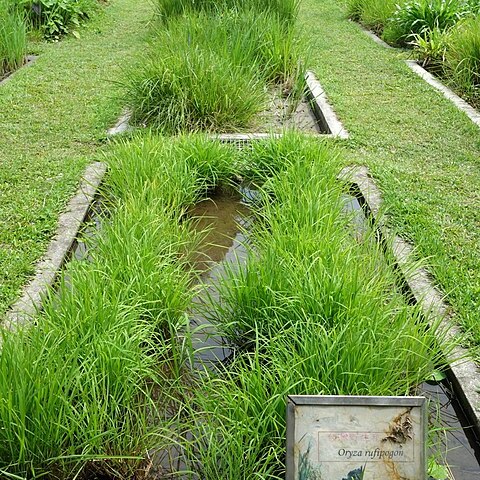Perennial, aquatic, tufted or stoloniferous. Culms decumbent, rooting and tillering at nodes, sometimes floating, lower part spongy, 0.7–1.5 m or more tall. Leaf sheaths slightly inflated below, upper sheaths tight, glabrous, auricles conspicuous, glabrous or ciliate; leaf blades up to 40 × 1–2 cm, margins and midrib scabrid, apex acuminate; ligule up to 17 mm. Panicle spreading, 12–30 cm, eventually nodding; branches 1–5 at lowest node, longest 2.5–12 cm, axils bearded or glabrous. Spikelets oblong, 8–11 mm, length 2.7–4.5 times width, yellowish green with reddish apex, deciduous; sterile lemmas lanceolate, ca. 2.5 mm, apex acuminate; fertile lemma finely reticulate with scattered short glassy hairs, flanks slightly sulcate, keel stiffly ciliate, apex acuminate; awn 5–40 mm or more, stout, scaberulous. Anthers 4–6 mm. Caryopsis reddish brown, 5–7 mm. Fl. and fr. Apr–May and Oct–Nov. 2n = 24.
It is wild rice. It is a creeping grass. It has swollen roots. It keeps growing from year to year. It grows 2.5 m high. The flowers are light brown. They are in panicles 13-25 cm long.


